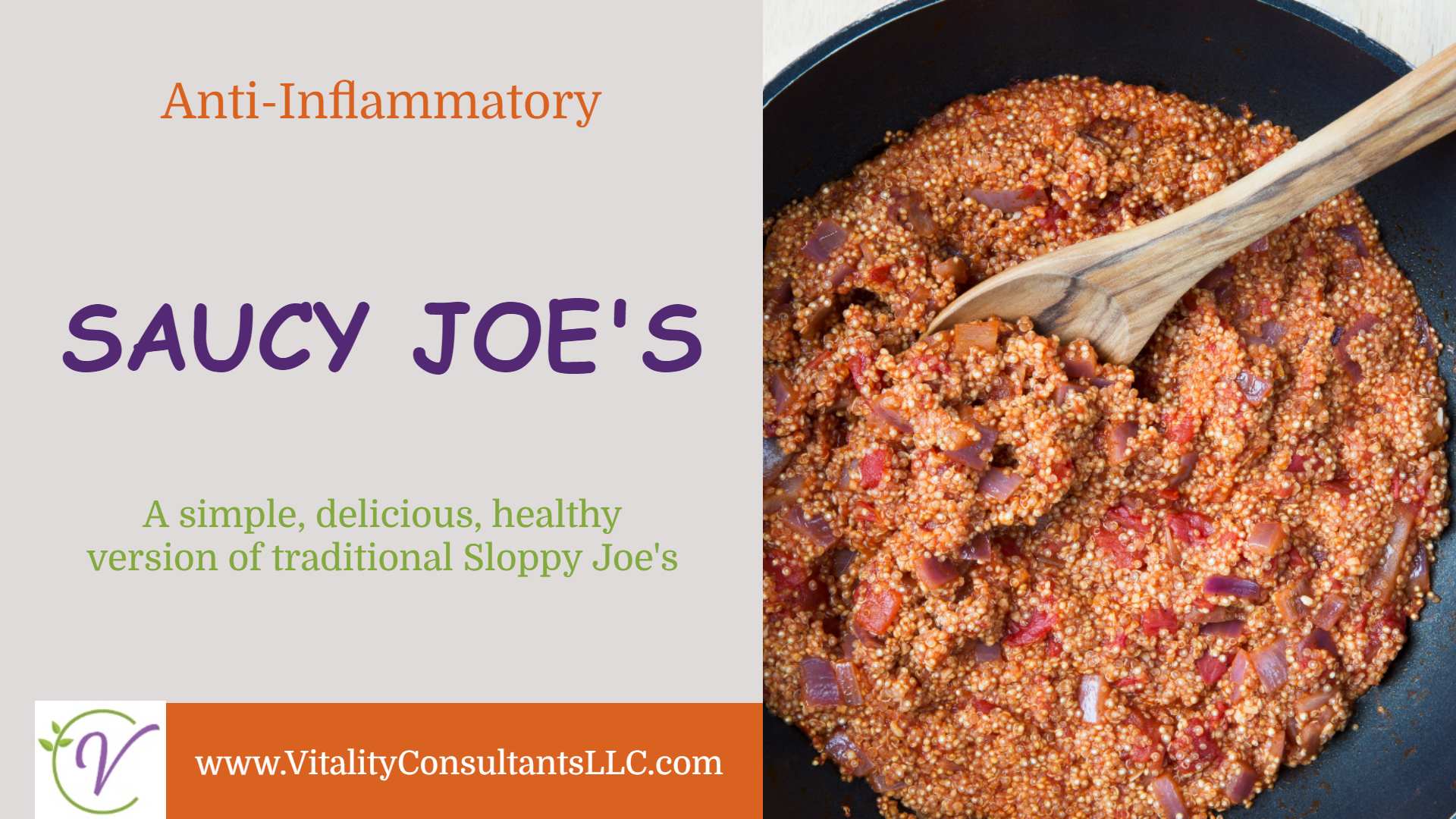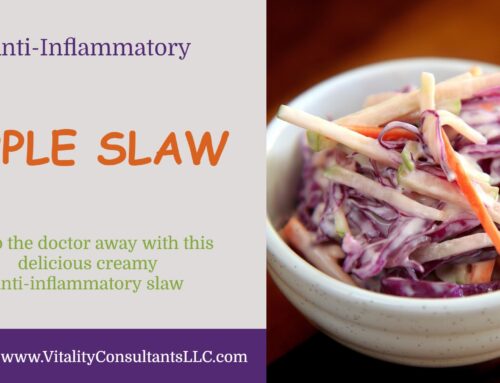An Anti-Inflammatory Lifestyle:
A Primer on the What, Why and How
 Does an anti-inflammatory lifestyle sound familiar to you? …
Does an anti-inflammatory lifestyle sound familiar to you? …
You wake up in the morning, but you don’t feel rested. You push through joint and muscle aches to go to work, but when you get there, you find that you simply can’t concentrate. Maybe you used to have a pretty effective metabolism, but now you can’t stop gaining weight! It’s exhausting and exhausted is how you feel most of the time.
Even if you don’t have an autoimmune disease (and the description above, by the way, may prompt you to think about your health), you’re probably aware that, to feel better, you need to eat better.
What is Inflammation, and Why Does It Matter?
Inflammation, a reaction to injury or infection, is a process by which the body’s white blood cells protect your system from illness or harm. Typically, it’s a natural process, one we couldn’t live without. In some people, though, this natural process goes haywire, triggering an inflammatory response when there’s nothing to fight. For these individuals, the body responds to normal tissues, like the joints or the thyroid gland, as abnormal. As you can imagine, when the body turns on itself, the individual suffers.
The milder symptoms of chronic inflammation can include fatigue, aches and pains, or brain fog. More serious diseases – like arthritis, colitis, chronic pain, fibromyalgia, heart disease, diabetes and more – are associated with chronic inflammation as well. Over 20 million Americans struggle with what are called autoimmune diseases. Many of them come to the conclusion that their diet may be partly to blame and needs to change.
 The Anti-Inflammatory Lifestyle Addresses Inflammation Issues
The Anti-Inflammatory Lifestyle Addresses Inflammation Issues
Basically, if you continue to eat the way that many of us did as teenagers, filling your body with carbohydrates, sugars and processed junk, your body will eventually fight back. Before that happens – before your immune system becomes overtaxed and autoimmune symptoms rear their ugly heads – it’s a good idea to research healthier food options.
The idea of food-as-medicine is catching on all over the country. Many doctors recommend choosing an anti-inflammatory diet to help support your body naturally. As research on the power of food to treat disease gains traction, more people are choosing to improve their diets now rather than wait for inflammatory illnesses to occur. Many choose an option such as the Paleo diet, which includes lean meats, fish, vegetables, fruits, and nuts.
Who Can Benefit from an Anti-Inflammatory Lifestyle?
Whether you suffer from an autoimmune disease already, want to lose weight, or simply want to improve the quality of your life before health problems appear, an Anti-Inflammatory diet may be a significant first step.
We know it’s not easy to begin this Anti-Inflammatory journey. After all, unhealthy choices are all around us, and cravings don’t disappear overnight. But with delicious options that don’t make you feel deprived, it’s easier to give the Anti-Inflammatory lifestyle a try. The best part about it? You can feel confident that you’re fueling up with food that tastes good and is good for your body, too.
Give Anti-Inflammatory a Try
While some of our employees, relatives & friends have hesitated, they’ve taken the Anti-Inflammatory plunge, and so can you! Read Ashley Nanney’s story, and let us know how we can help you take steps toward a healthier life.
Recipe
We will share a recipe from The Official Anti-Inflammatory Diet Masterclass to get you started on a successful journey!

Saucy Joe’s
Ingredients
- 1 Tbsp olive oil
- 1 onion finely chopped
- 1 green bell pepper finely chopped
- 2 garlic cloves minced
- 1 ¼ lb lean ground beef
- 15 oz tomato sauce
- 1 Tbsp chili powder
- ½ tsp ground cumin
Instructions
- Heat oil in a large skillet on medium high to saute onion, pepper and garlic, about 10 minutes, or until tender.
- Add the ground beef and cook 8–10 minutes longer while the meat begins to brown.
- Pour in tomato sauce, chili powder and cumin and continue cooking until beef is completely done.
- Drain grease and remove from heat.
- Eat alone or serve inside bell peppers or on top of vegetable "noodles".
Want free anti-inflammatory recipes, downloadable resources and efficiency tips and tricks from a professional chef? Of course, you do! Click here for the secret sauce!







